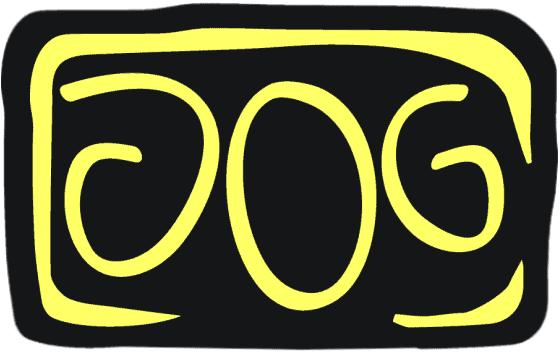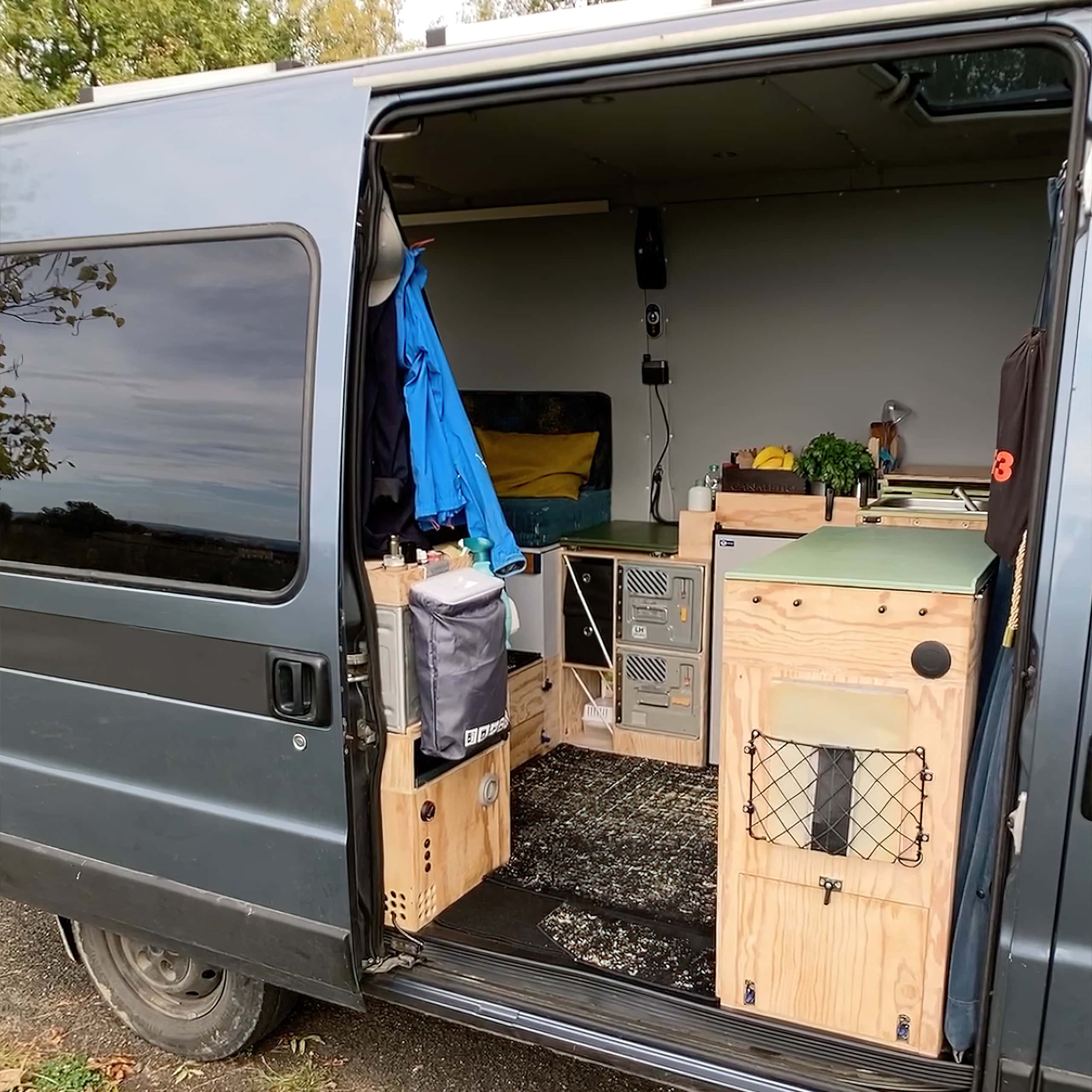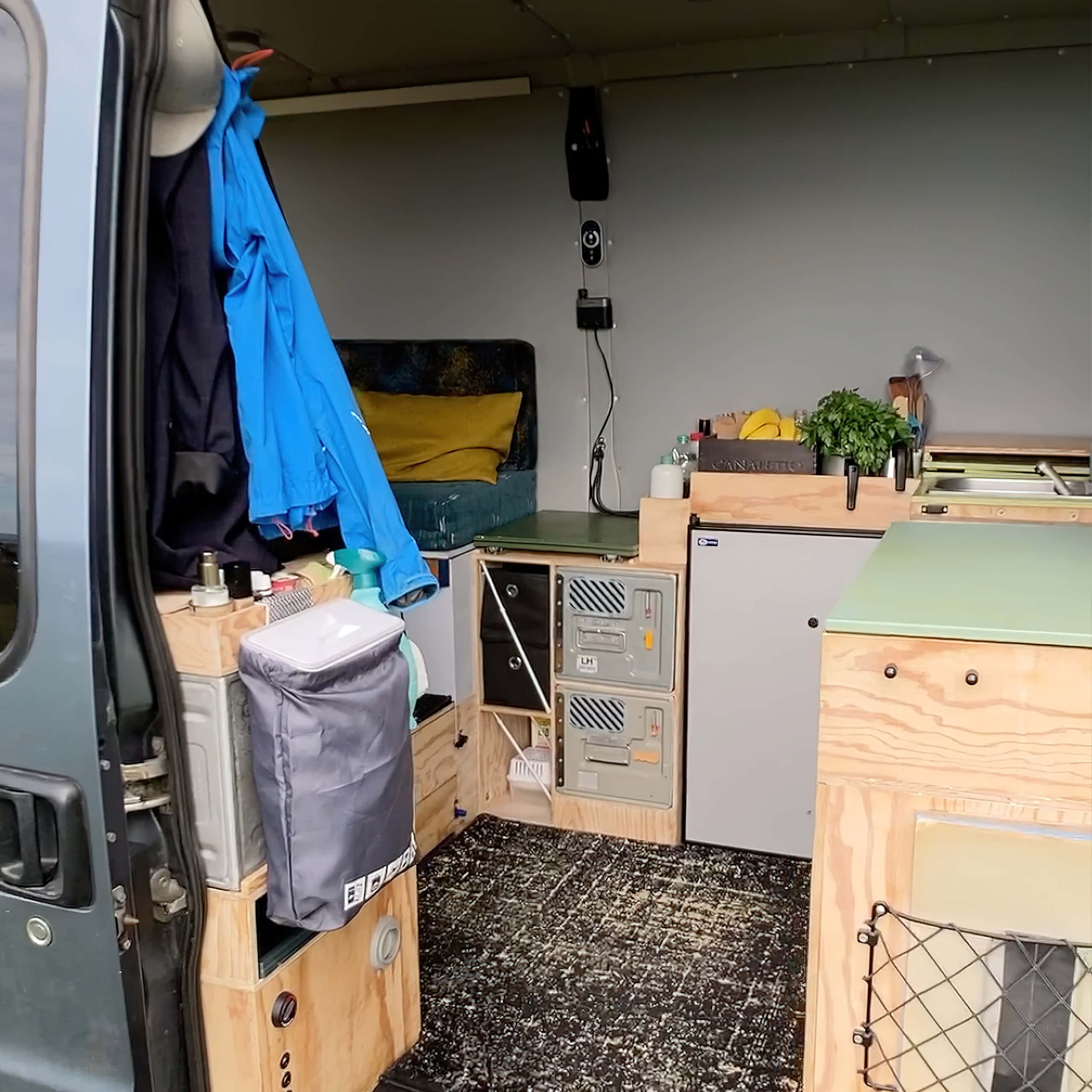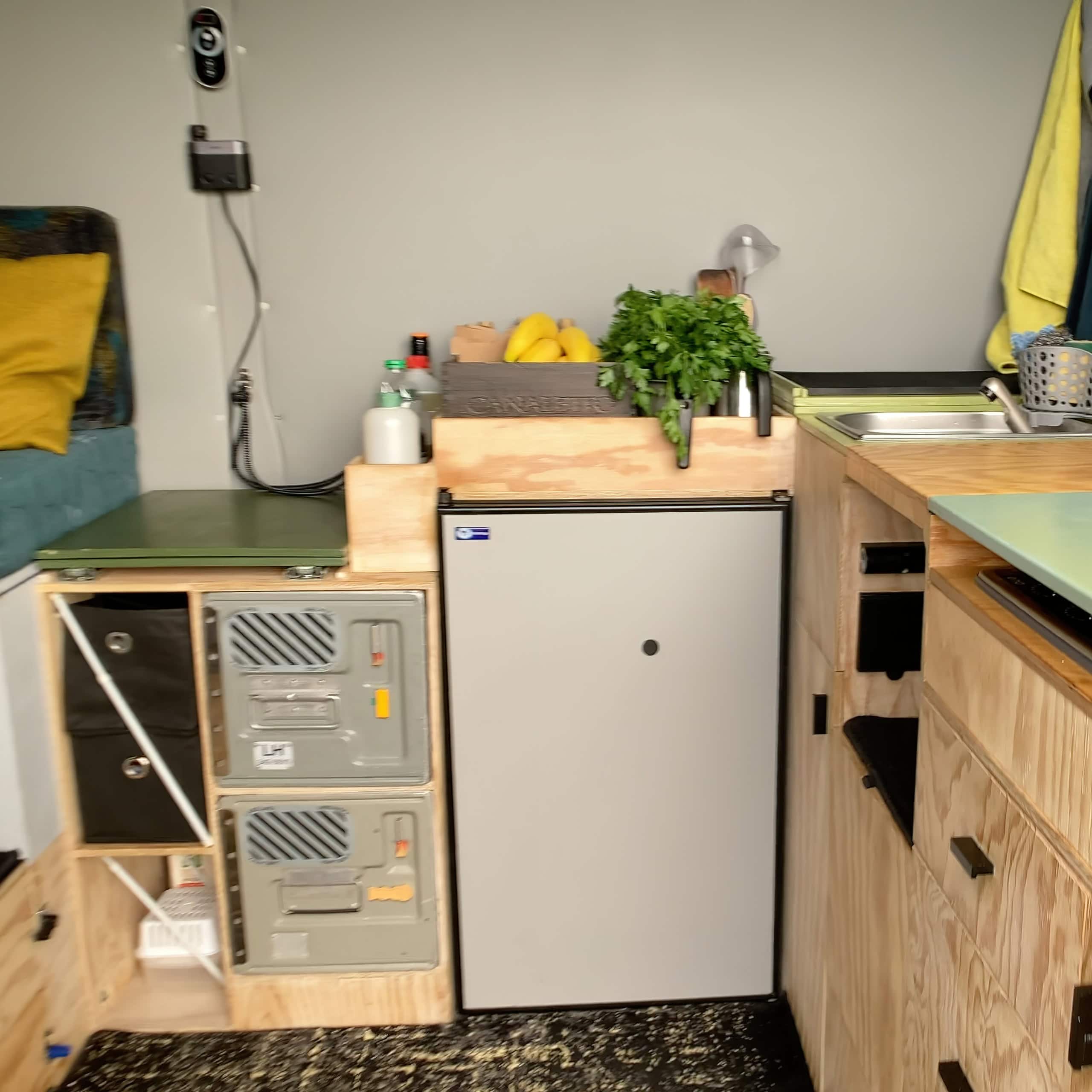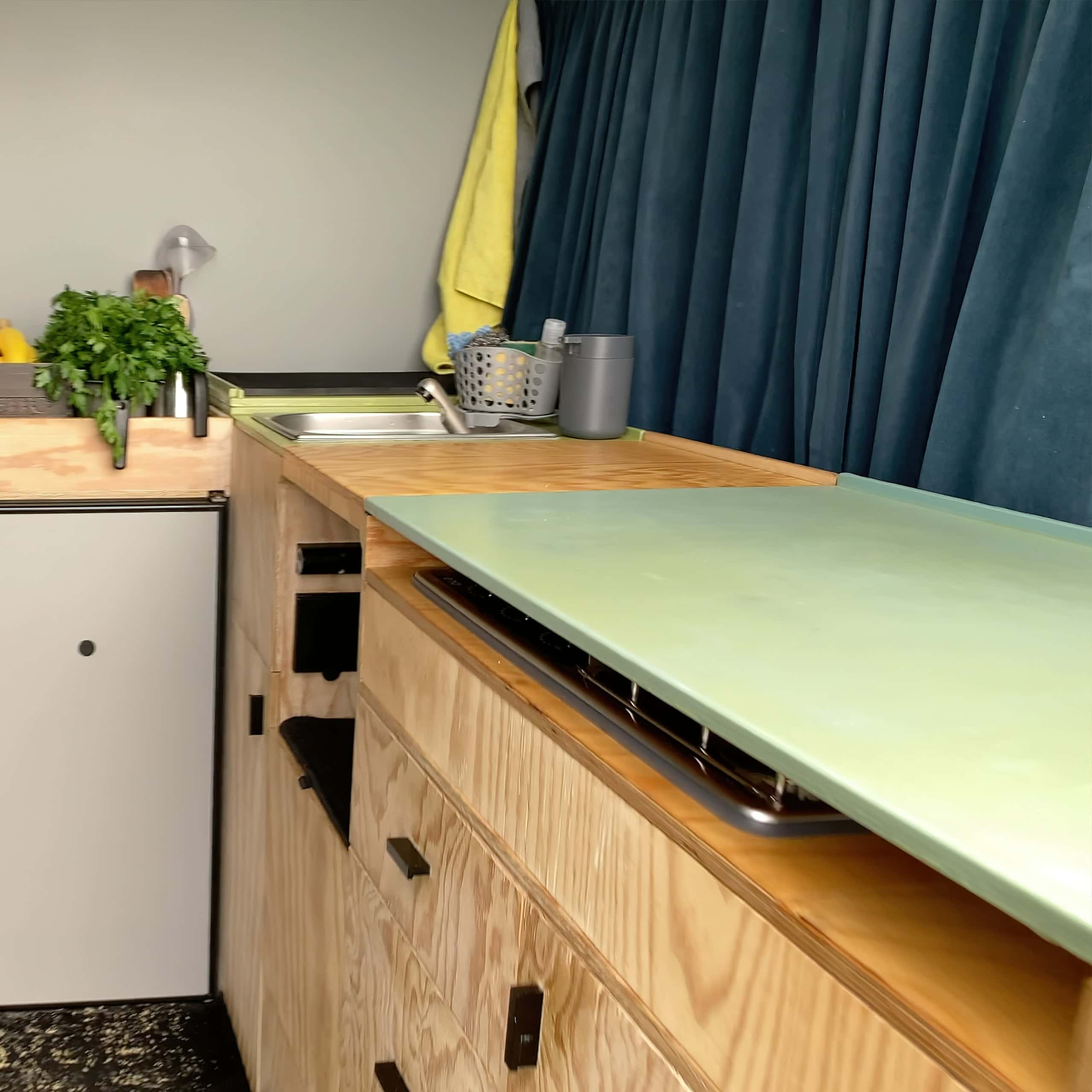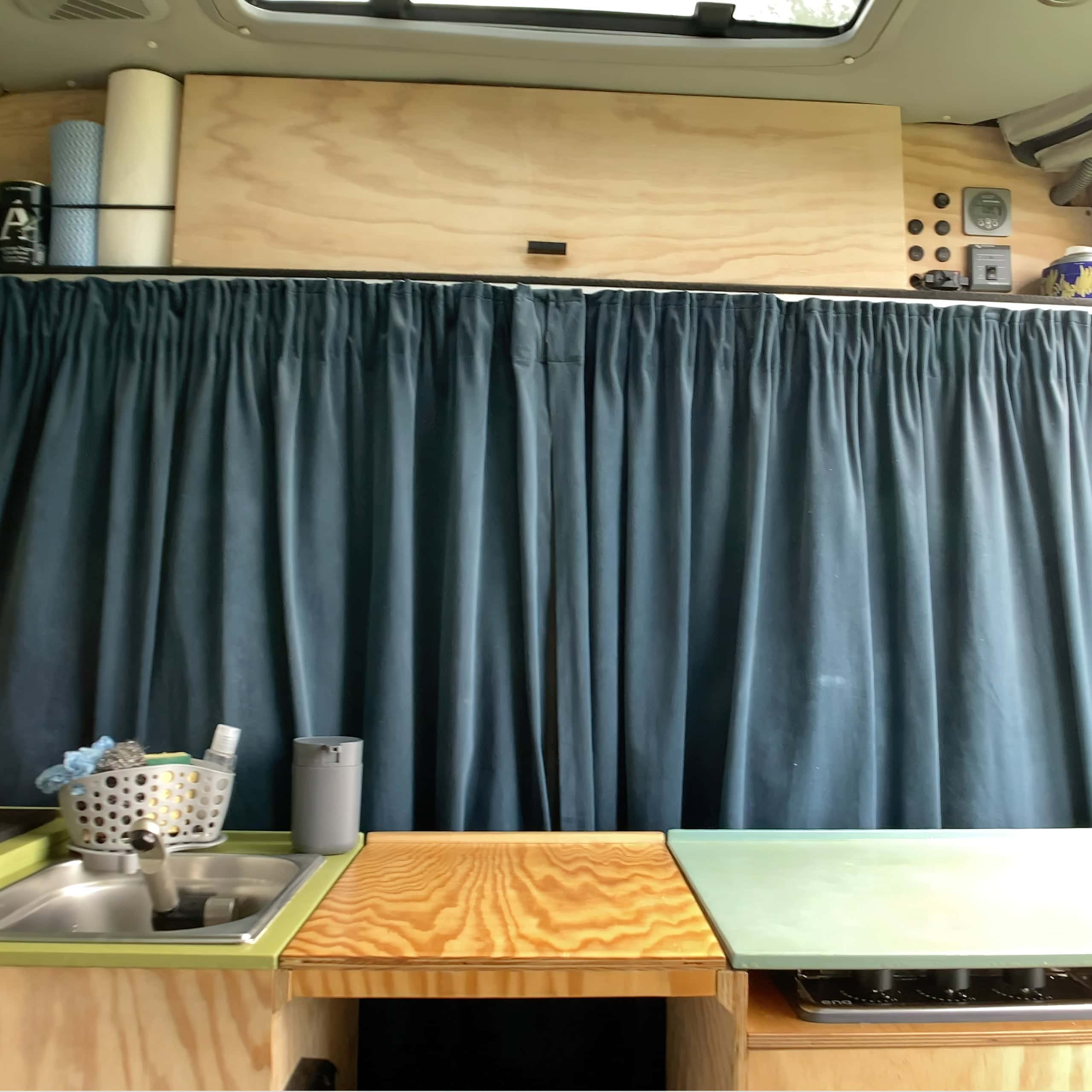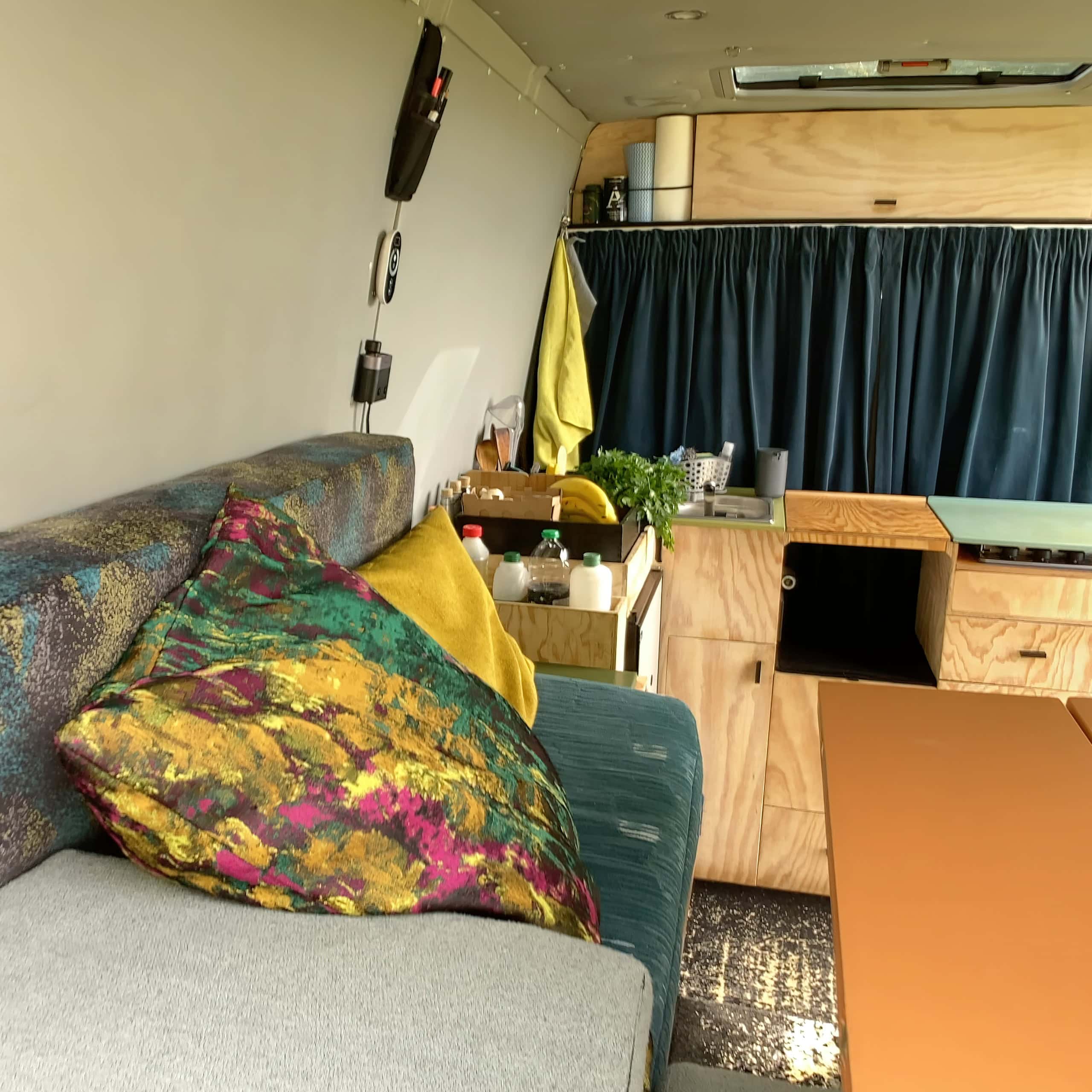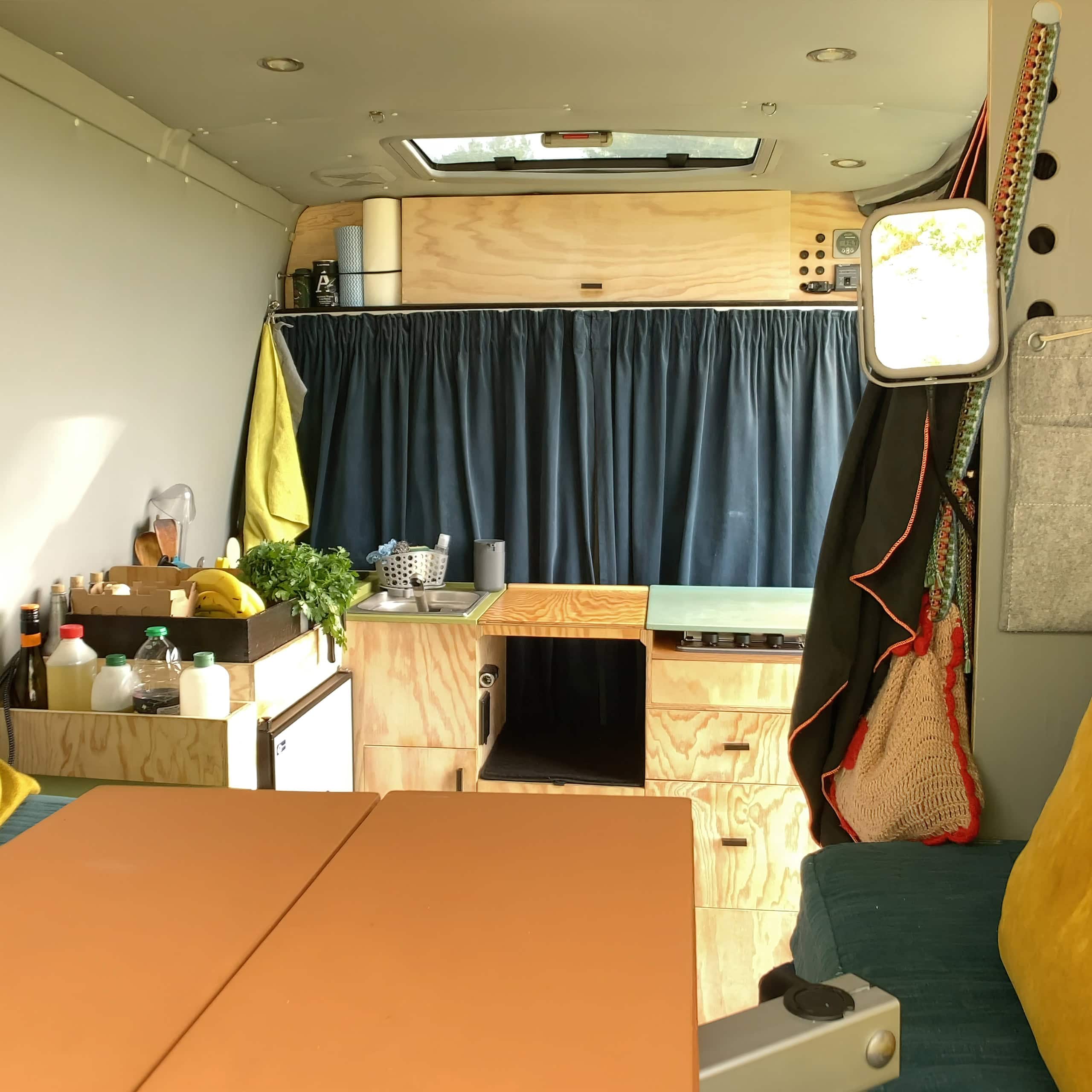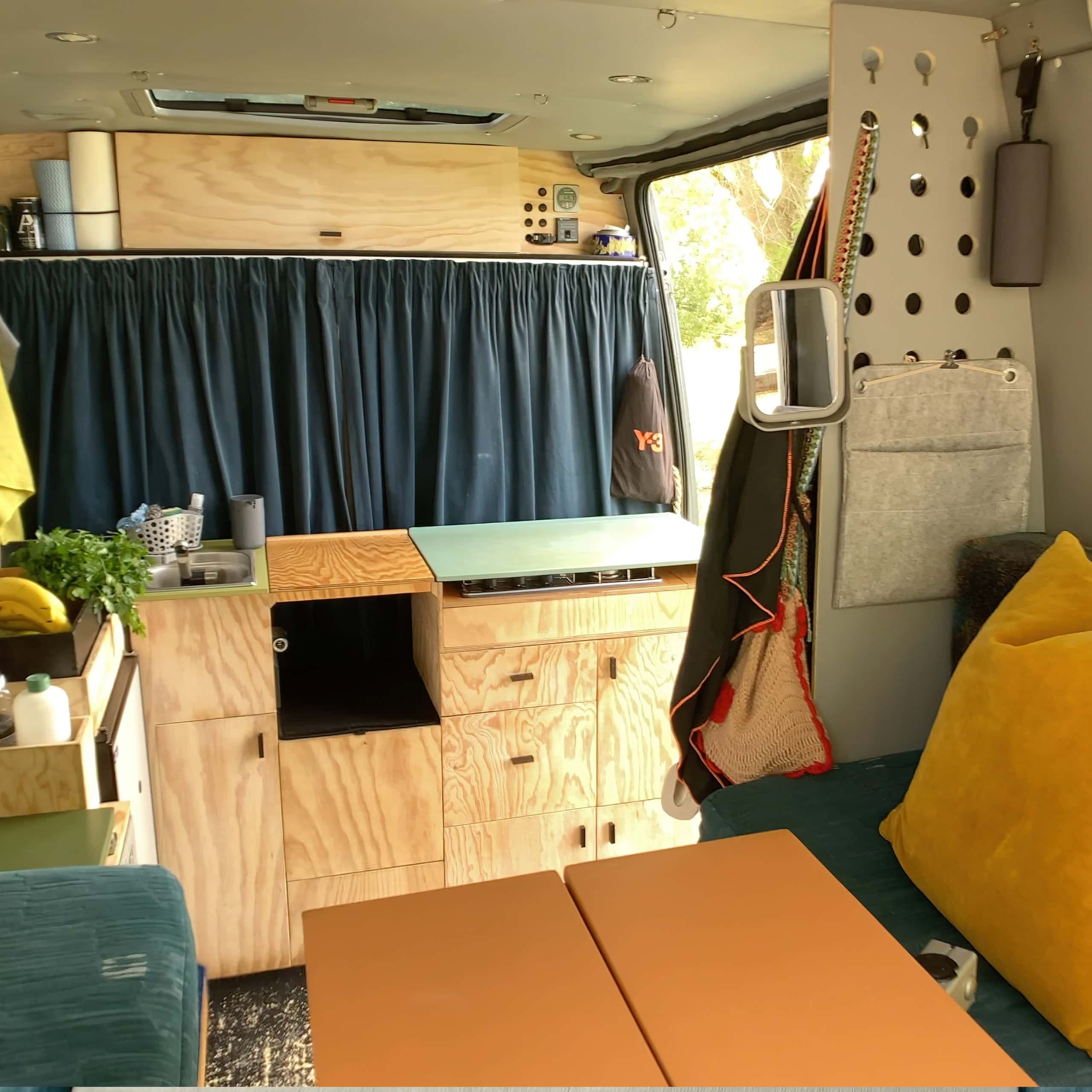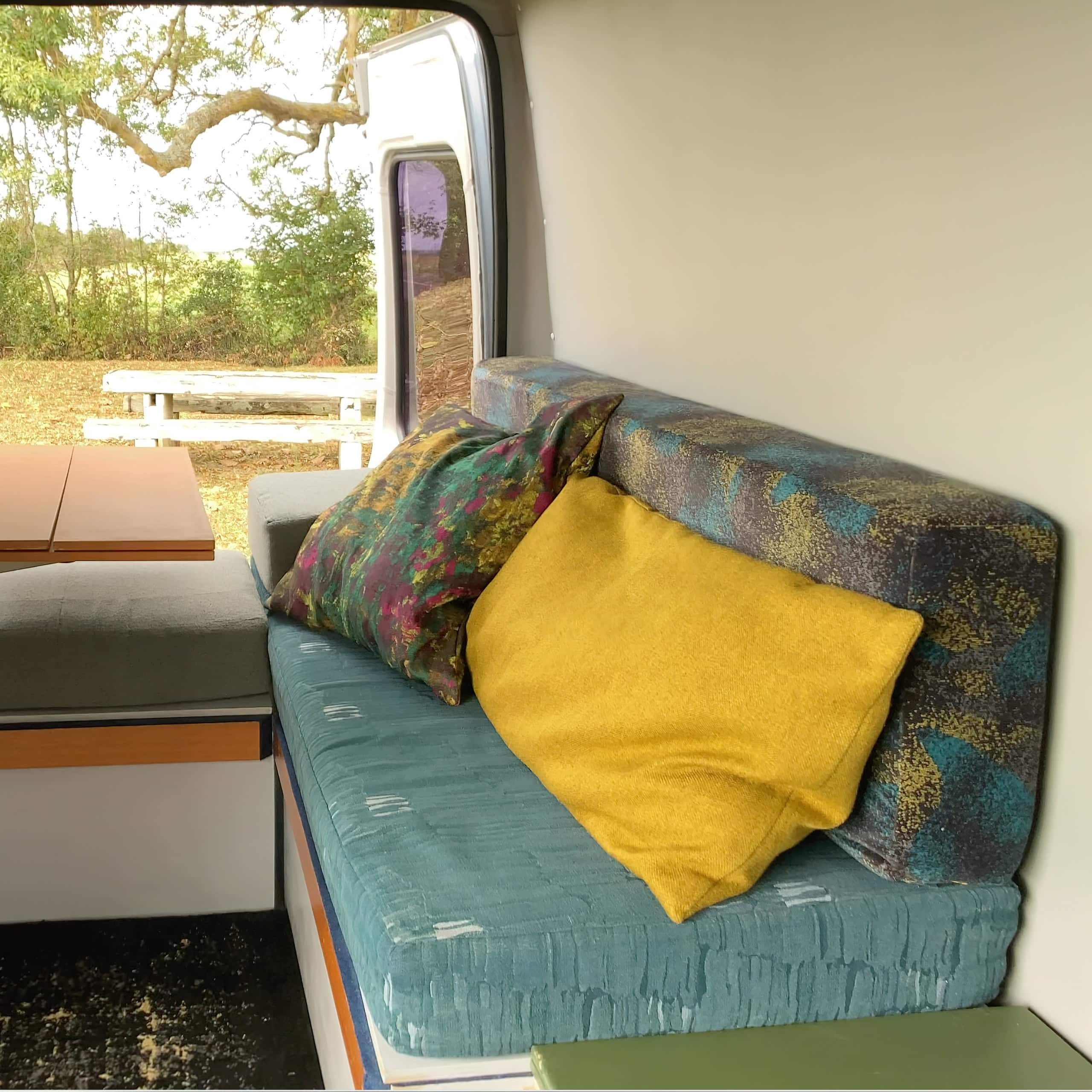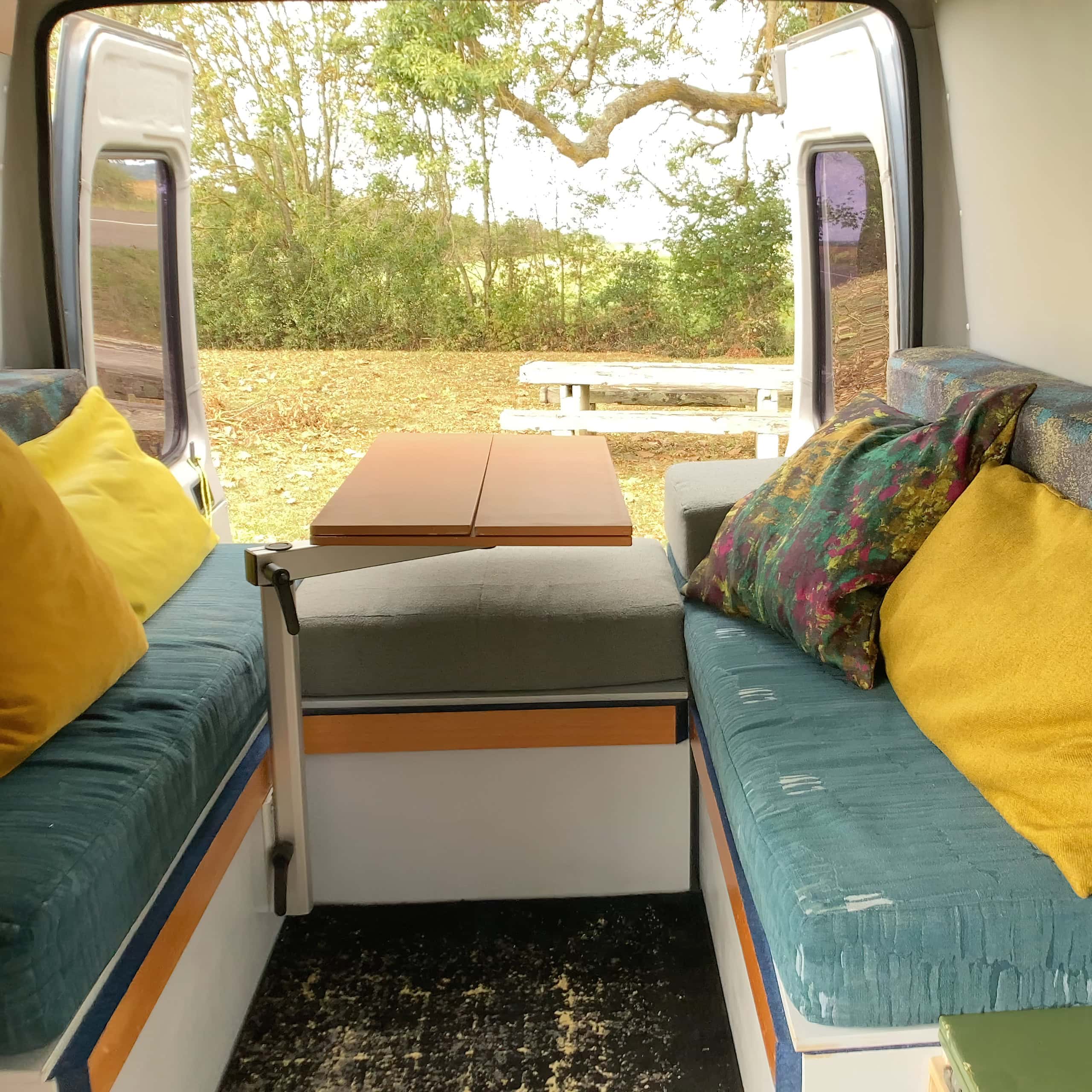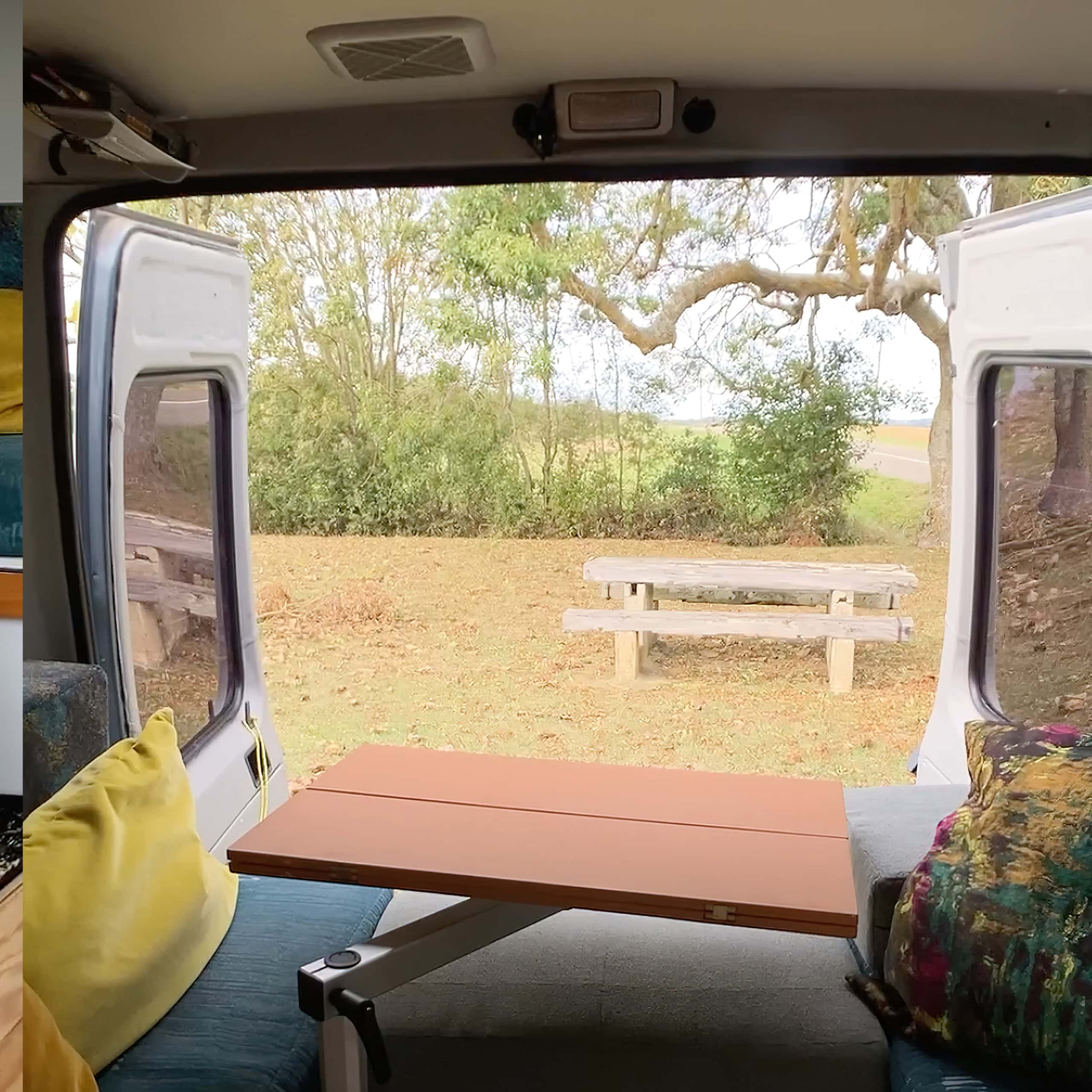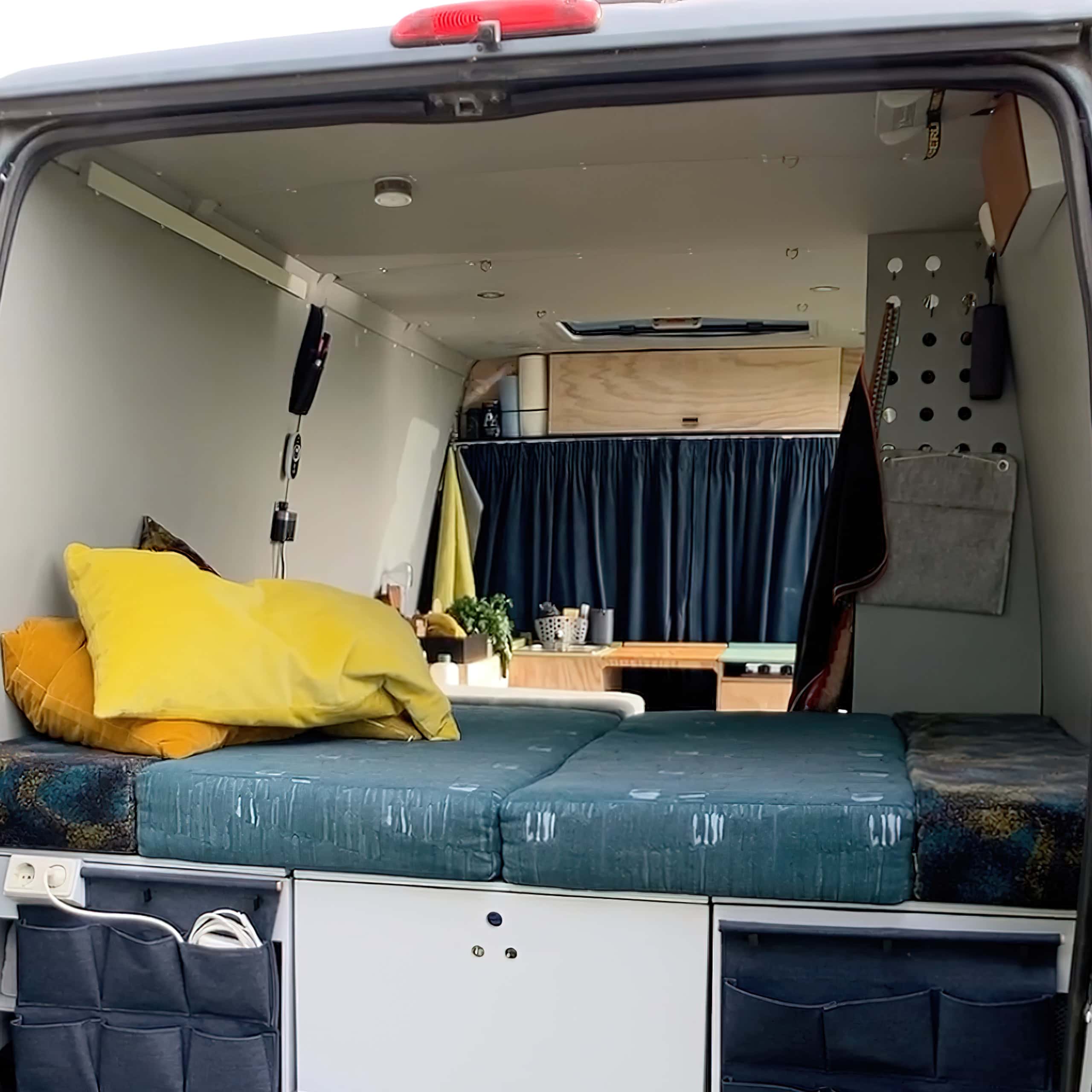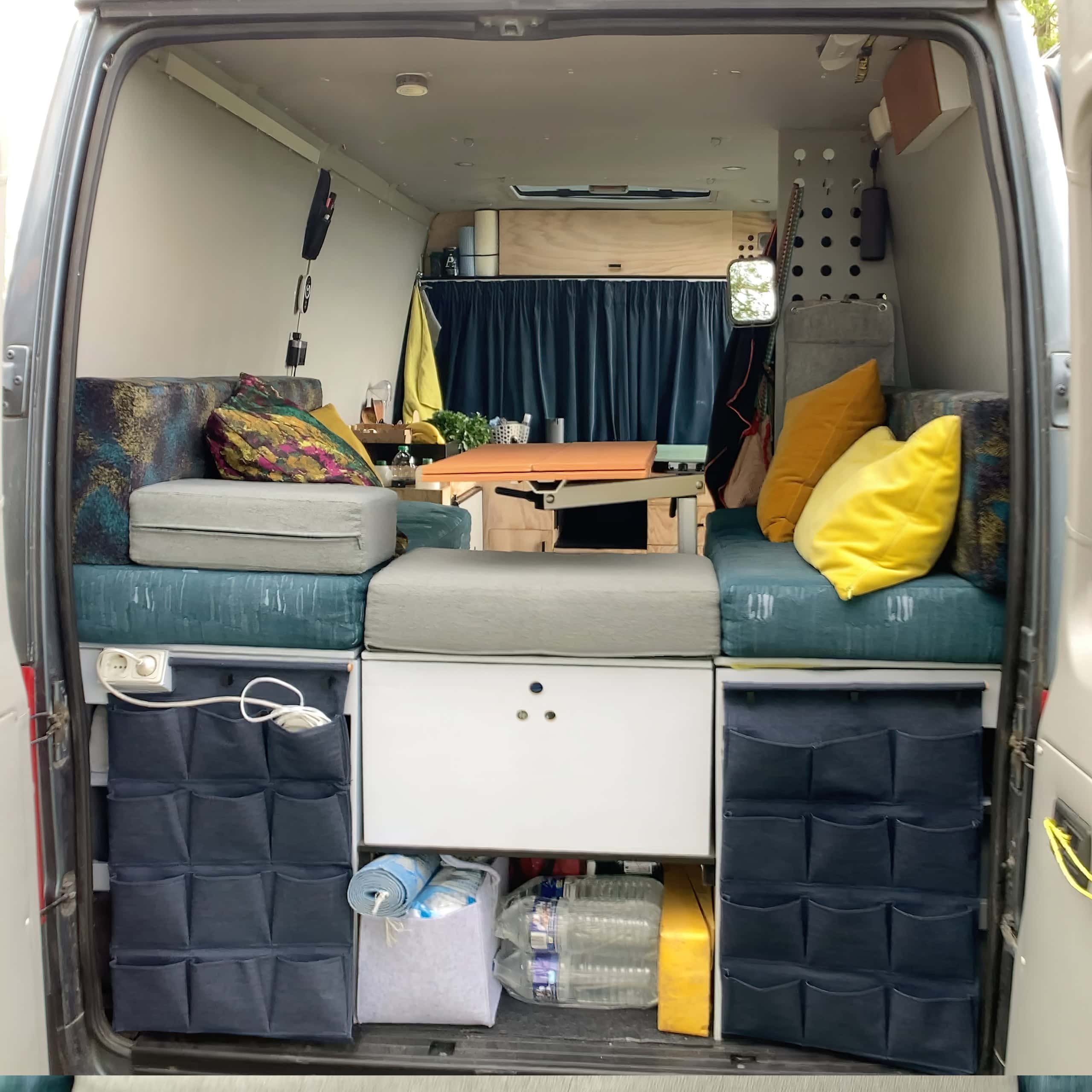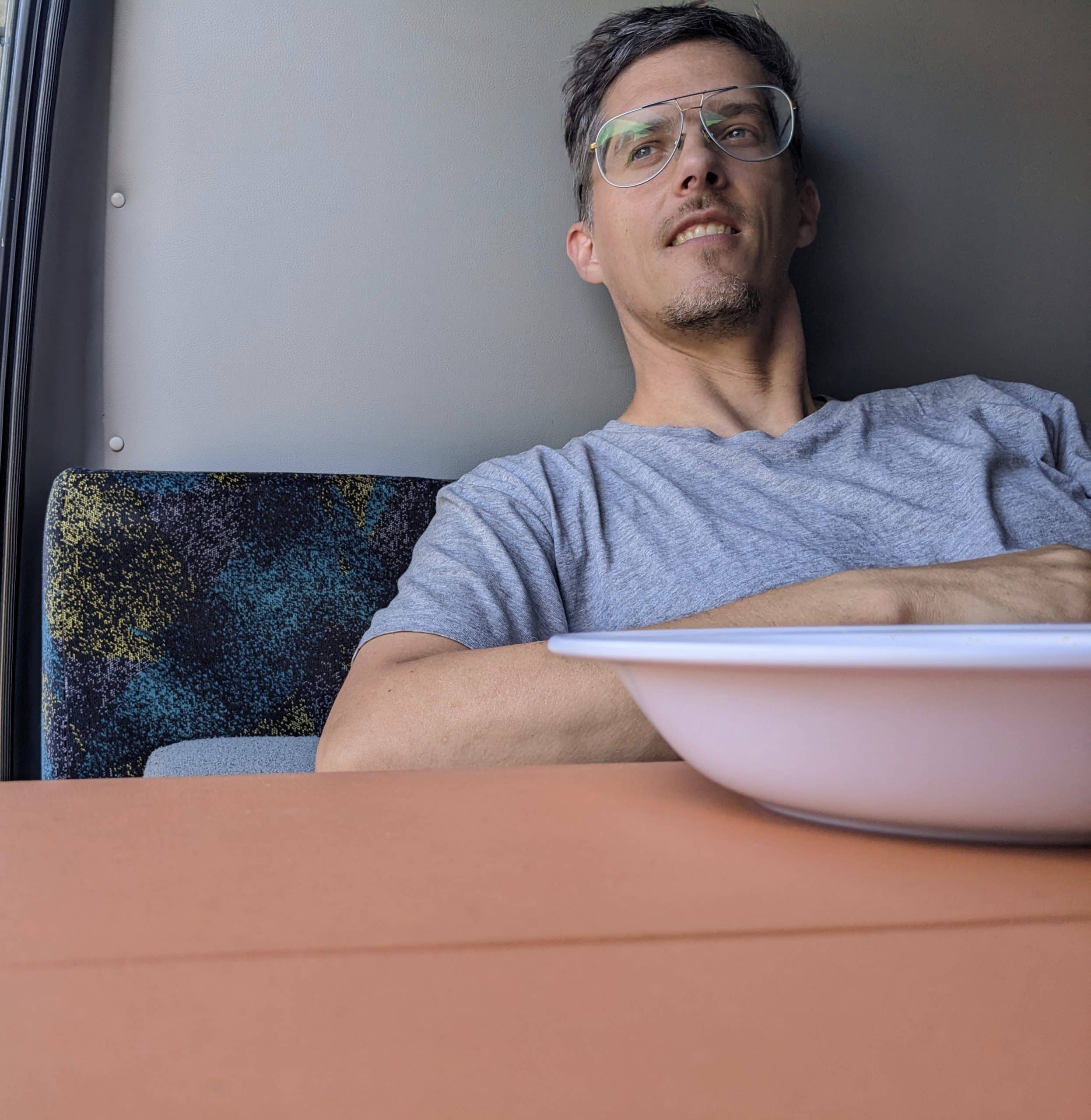BOW-11 / Our home on four wheels
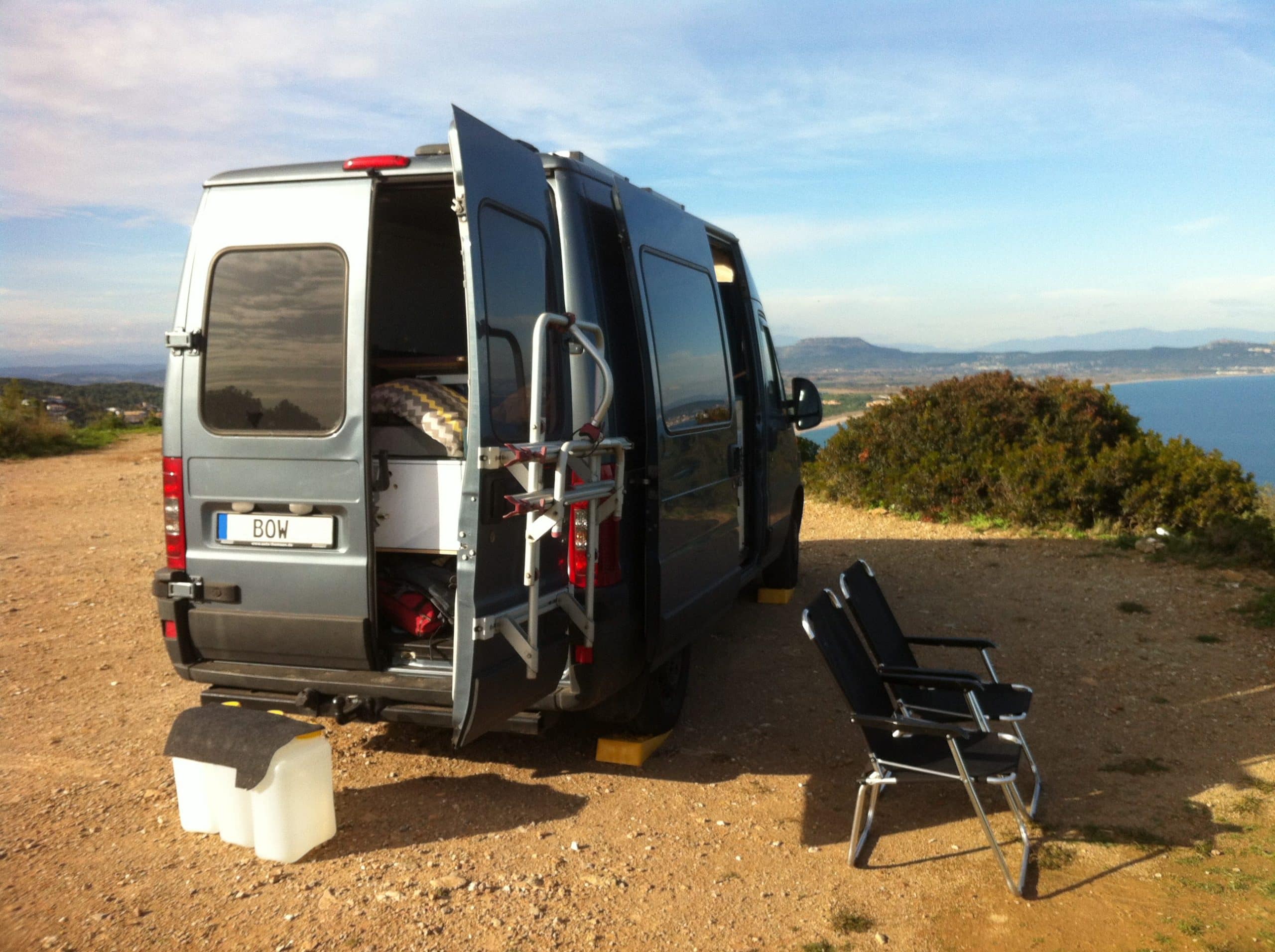
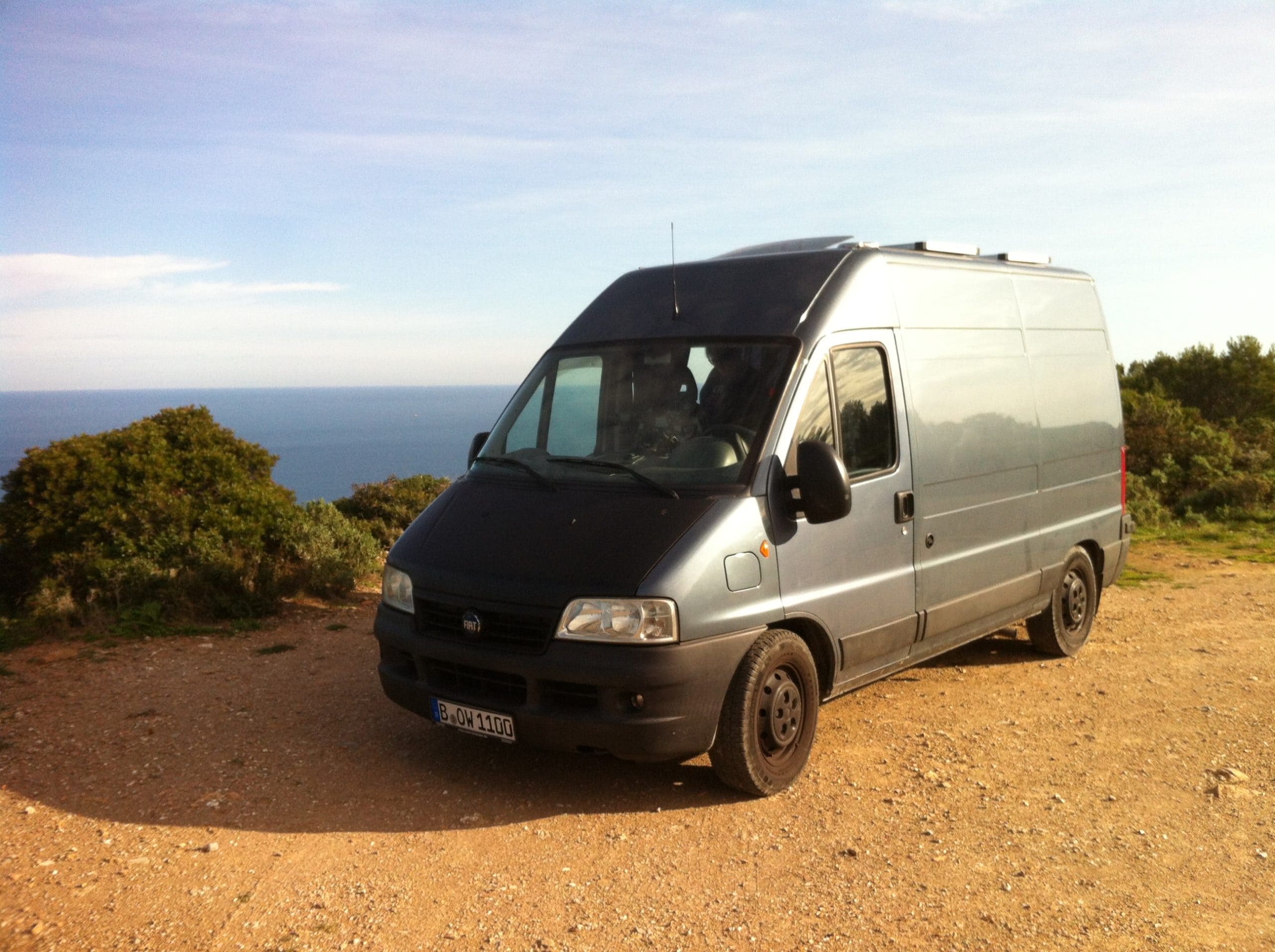
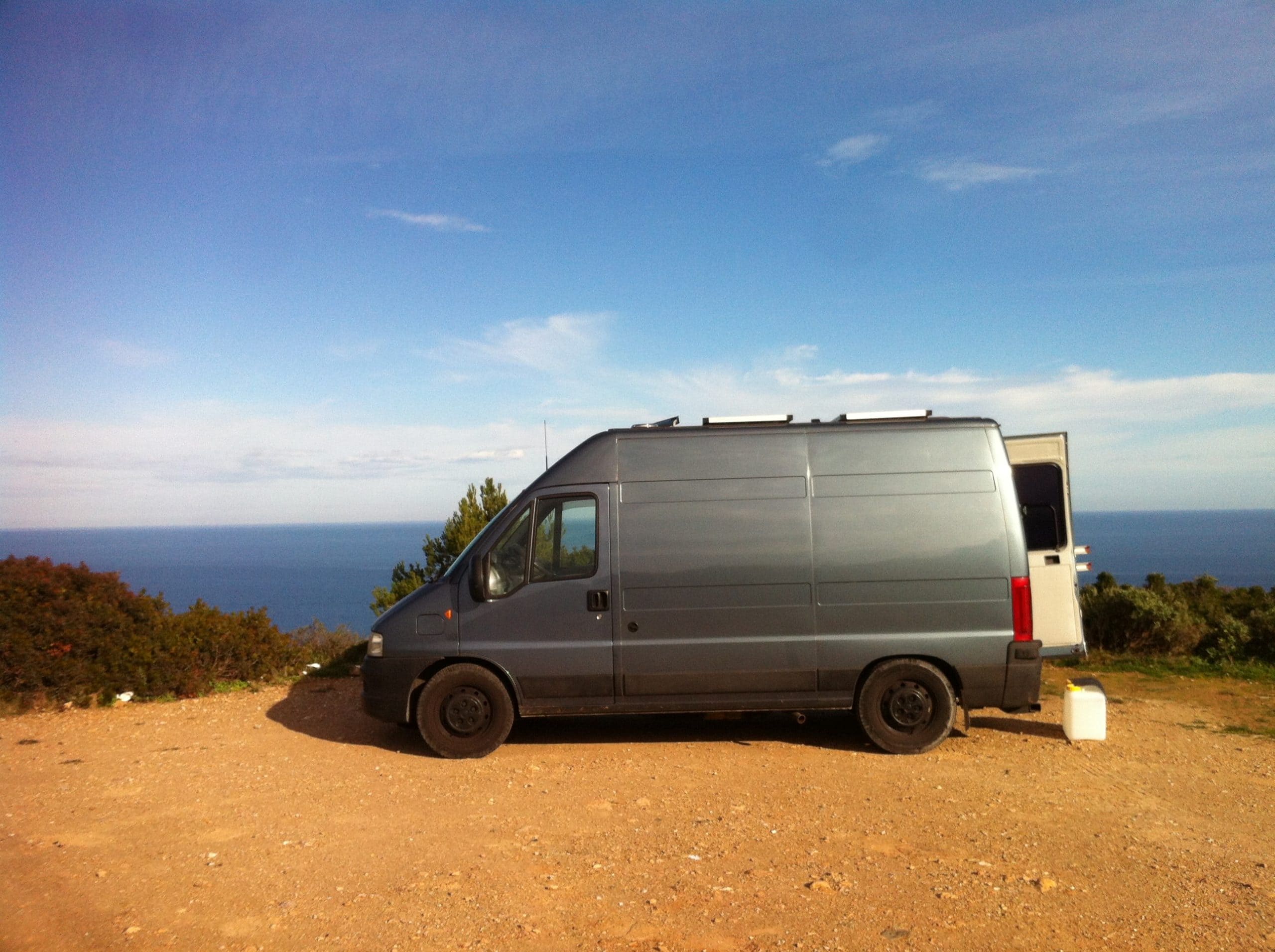
This is our camper van, our home1 on wheels, which we call Bow. We chose a Fiat Ducato 244 H2 L2, stripped it down to its bare essentials, and rebuilt it completely. The engine is a 2.0, not the fastest or most powerful, but it fits our slower, conscious way of life.
We chose a CNG-gasoline hybrid engine, available from only a few brands, to reduce CO2 emissions and save on fuel costs.
While a newer and sturdier base might have seemed practical, we prioritized finding a more environmentally friendly option. We chose a CNG-gasoline hybrid engine, available from only a few brands, to reduce CO2 emissions and save on fuel costs. Additionally, the van is equipped with solar panels.
We opted for a smaller motorhome, aiming for something as large as necessary but as compact as possible. This choice made it eco-friendly, cost-effective, and easy to maneuver and park.
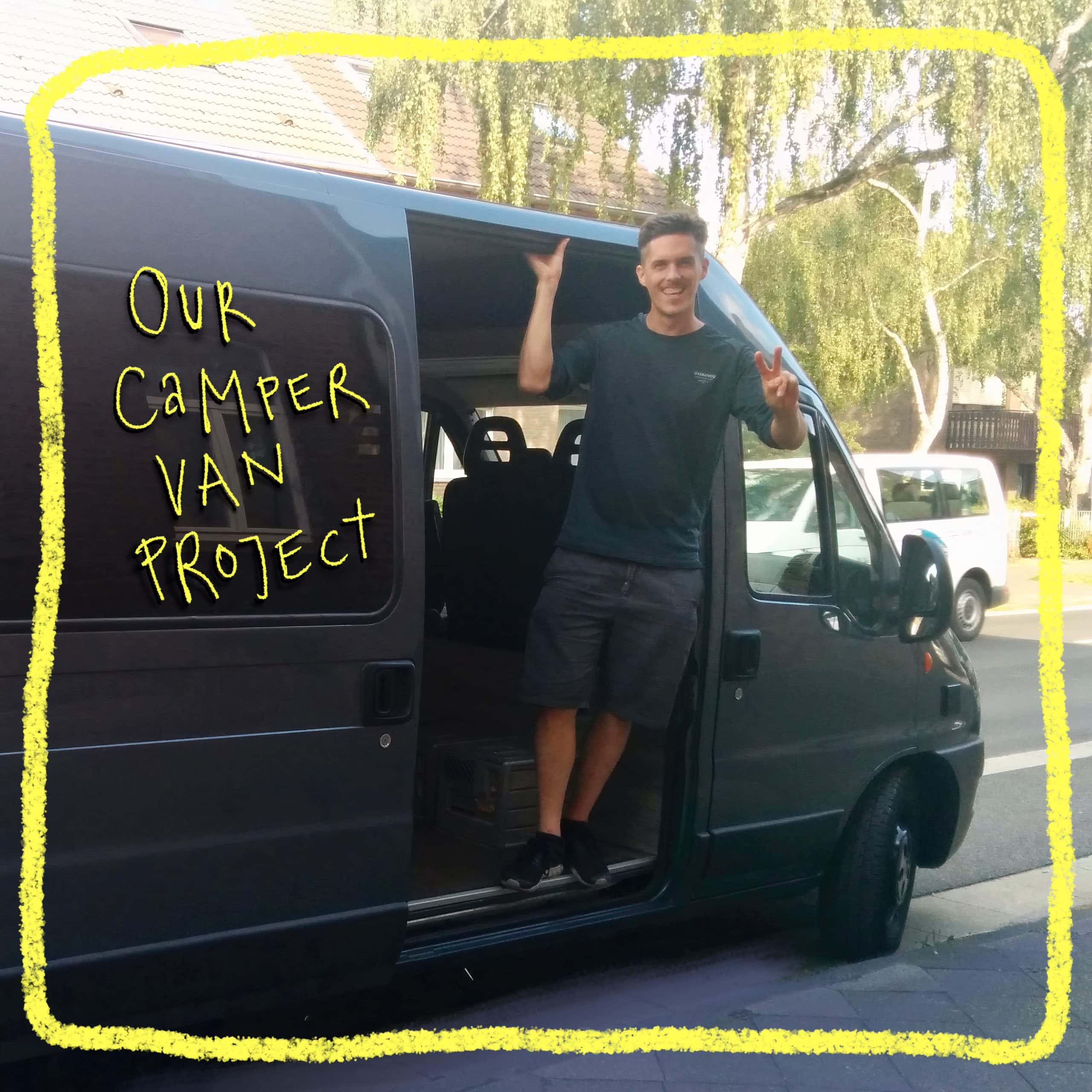
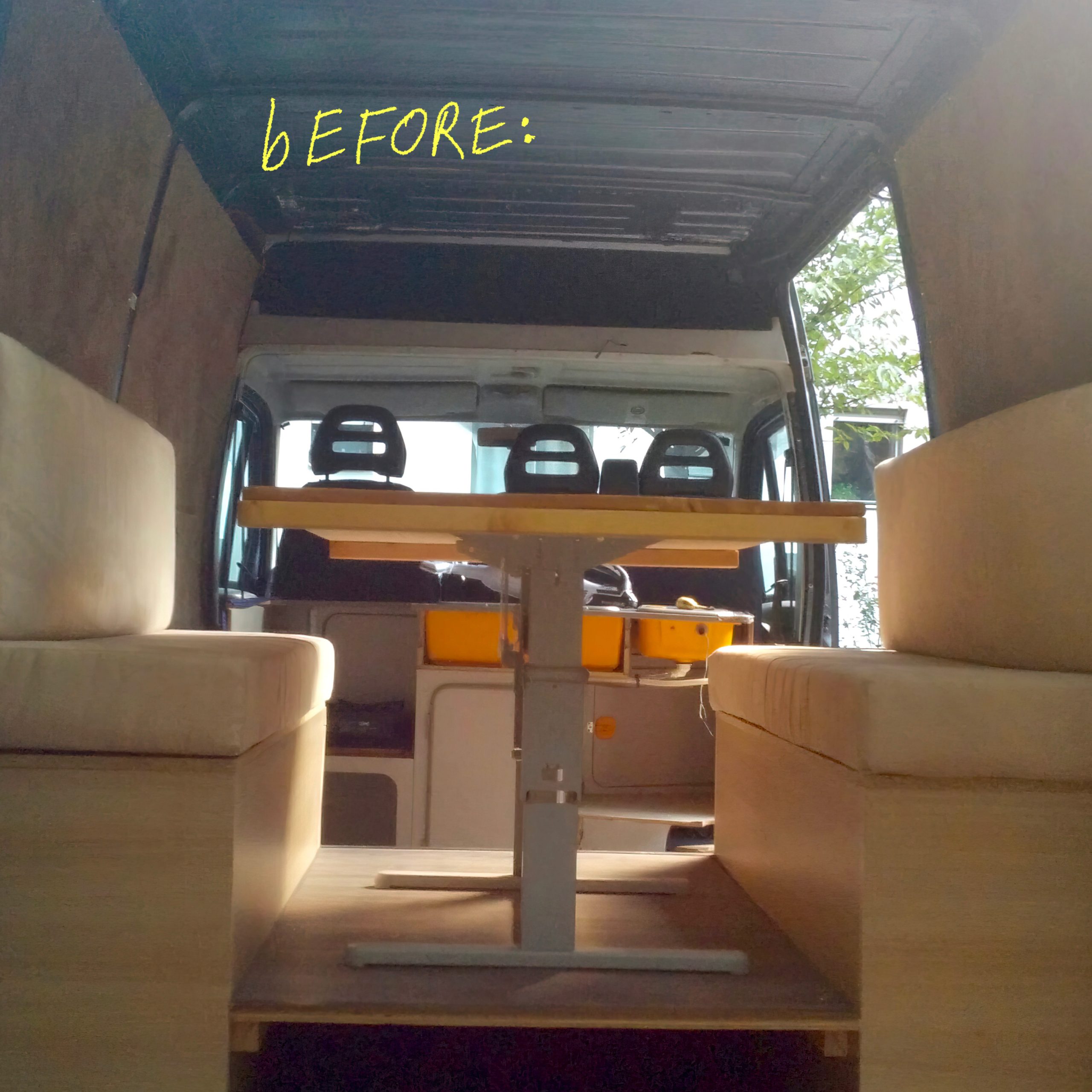
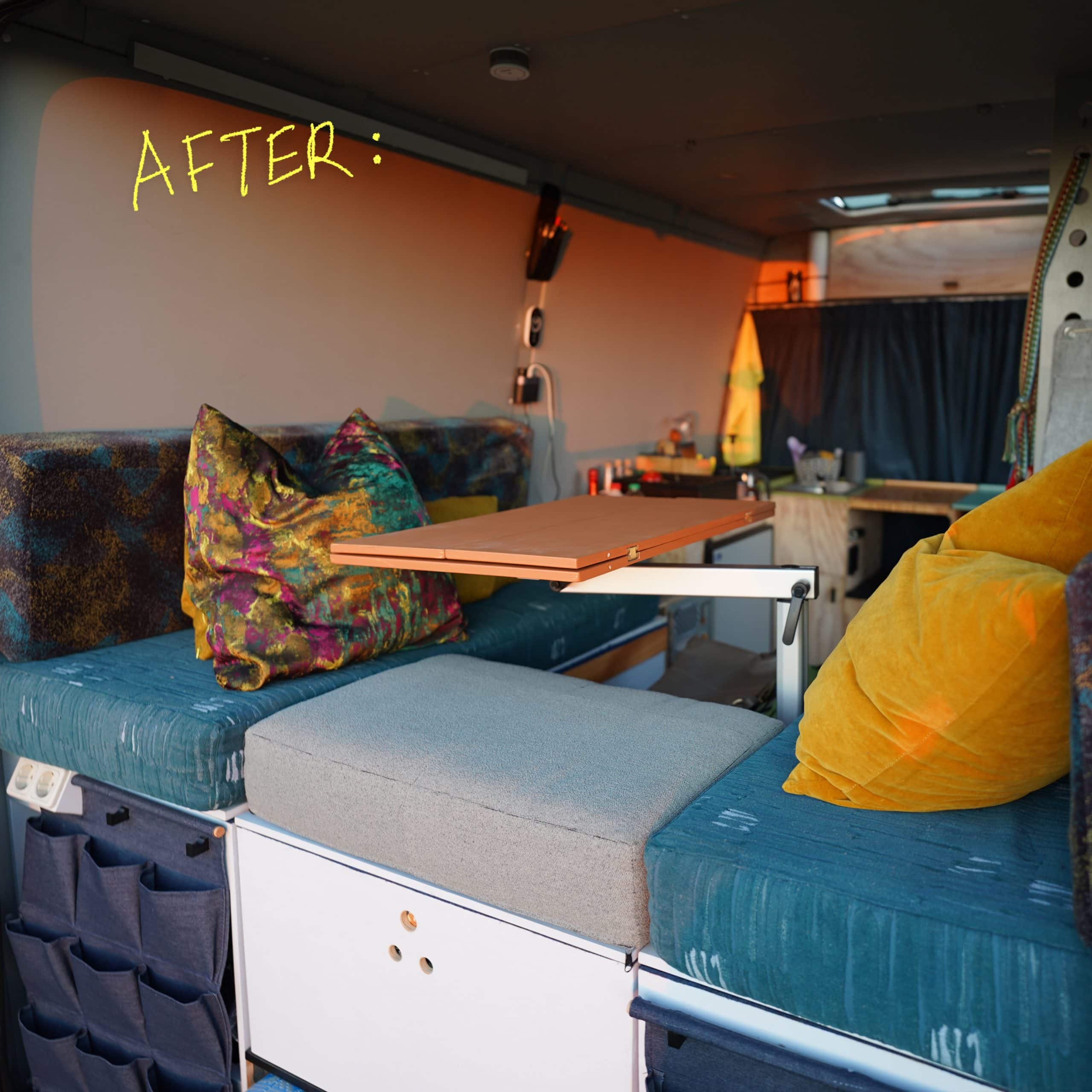
Although the van had previously been converted into a motorhome, most of the existing features didn’t meet our needs or match our aesthetic preferences. We wanted to customize the space to better suit our lifestyle and design tastes, so we decided to rebuild it from the ground up.
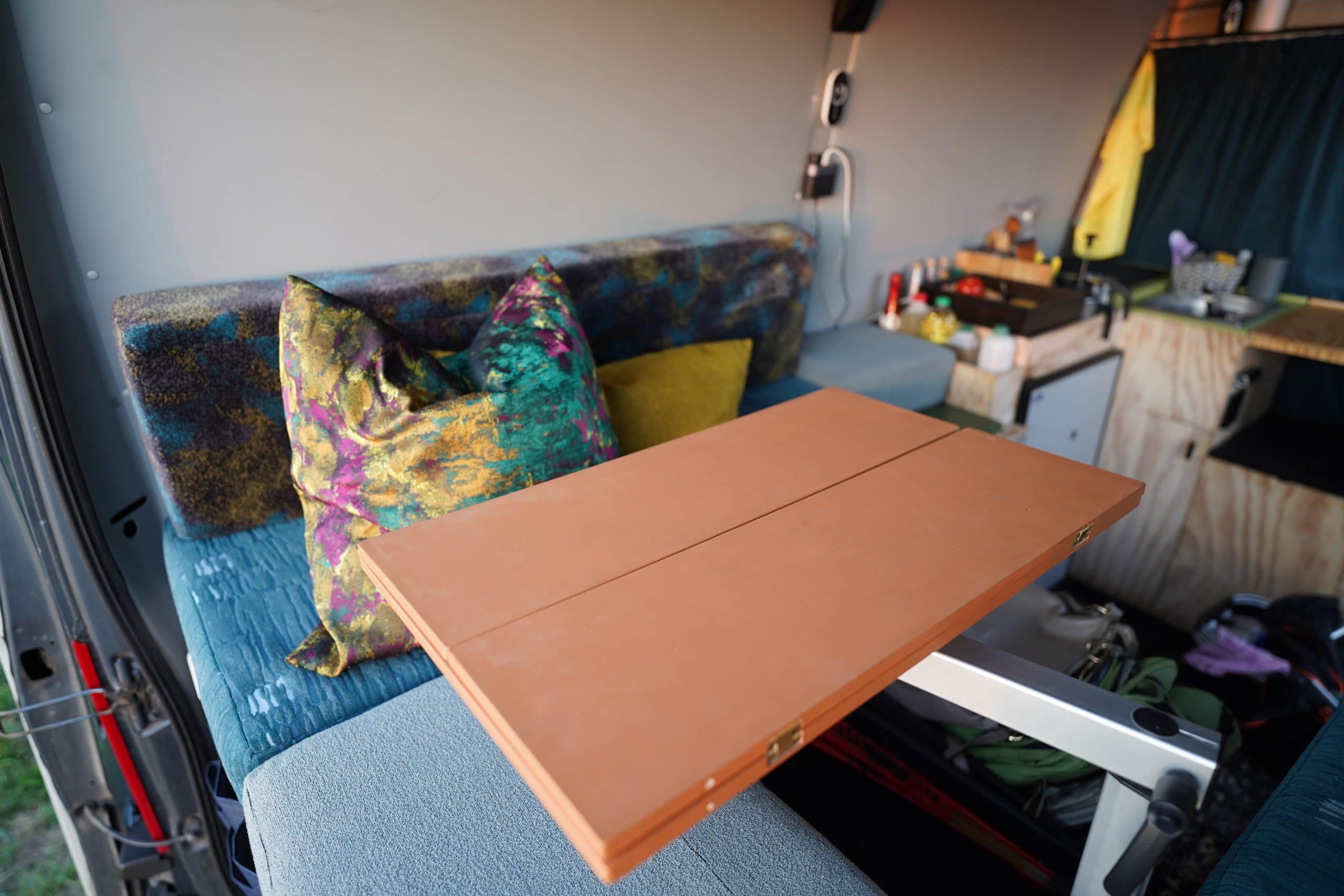

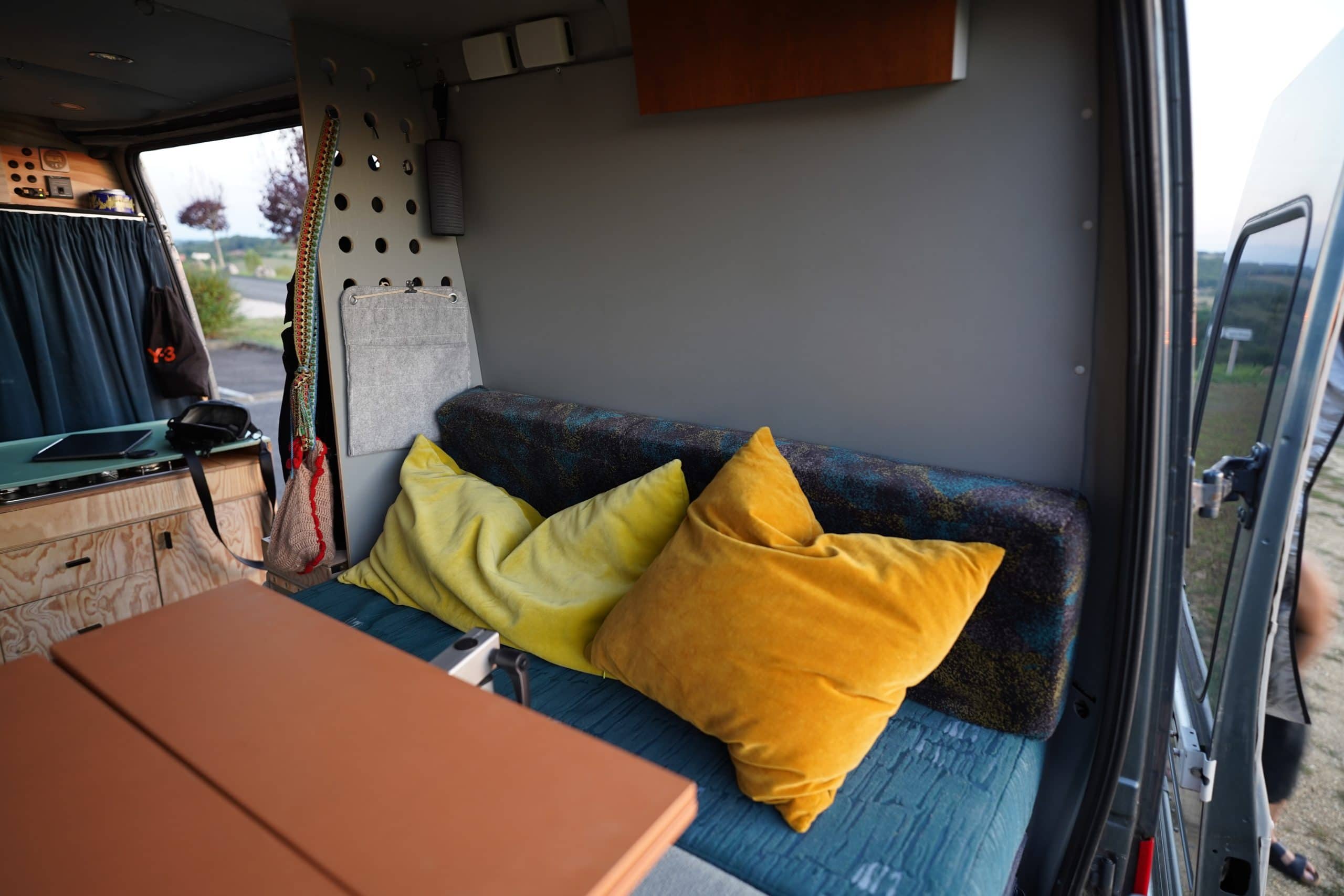
We went through a lot of different design phases to figure out how it should look like and ended up merging an airplane look with aluminum containers with Japanese color schemes and a modern soaped Maritime pine look. The most important to us was to make it like a home, cosy and functional without the extra rooms for shower and toilet, so that the smaller van still feels spacious. So we opted for a shower in a drawer which works great.
It took us about a year to work on the van, we call Bow. Planning, customizing and finding the right parts took up a lot of time. Sometimes we got frustrated and thought about giving up. In the end, we finished the van, and the experience taught us a lot – not just about building a van but also about ourselves.
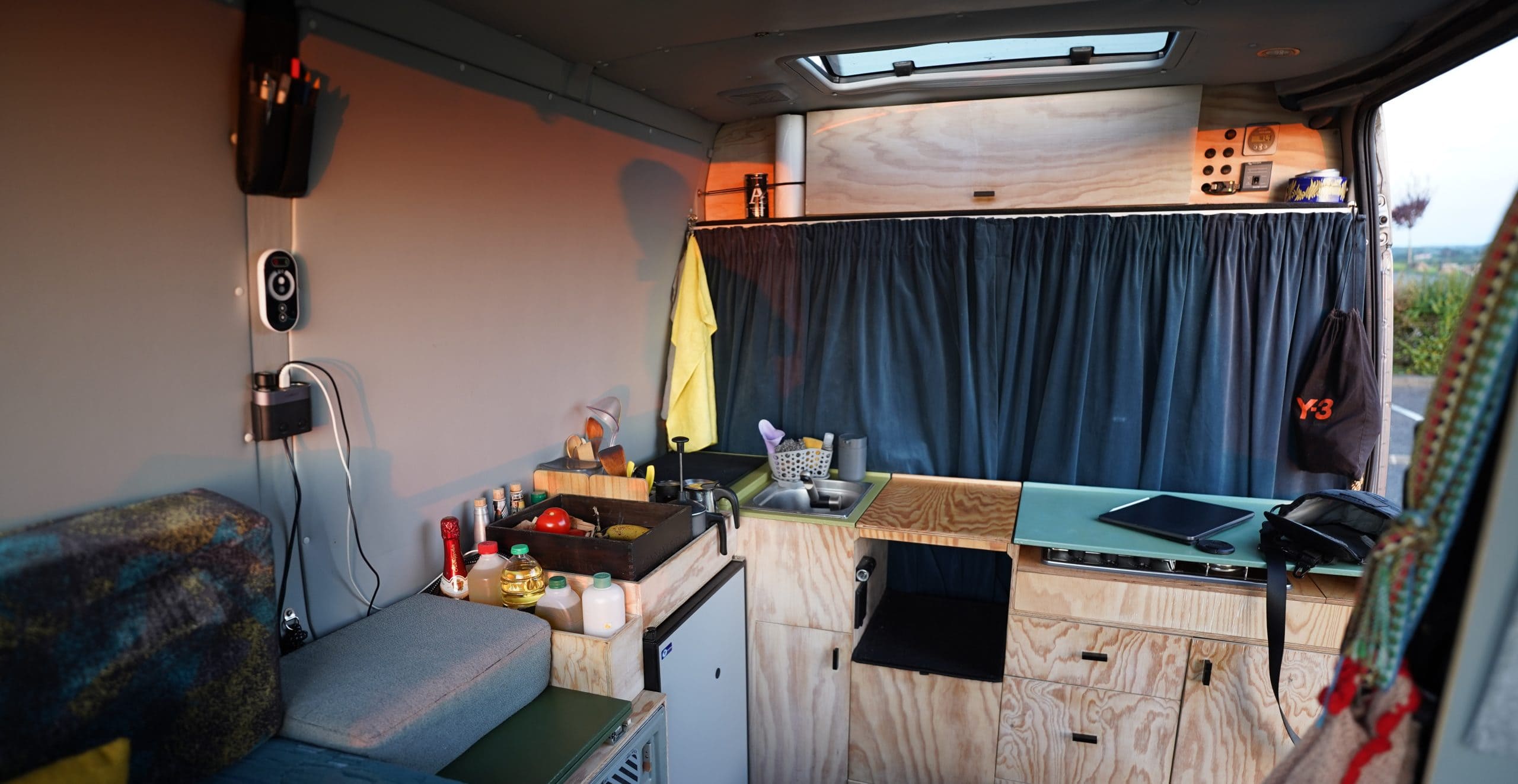
The open space layout ensures the small van feels spacious. Since there wasn’t enough room for a traditional shower and toilet, we designed a shower that slides out from a drawer, which works wonderfully, and we use a compact dry toilet solution.
The wardrobe wall serves as an effective space divider, providing practicality and a touch of privacy.
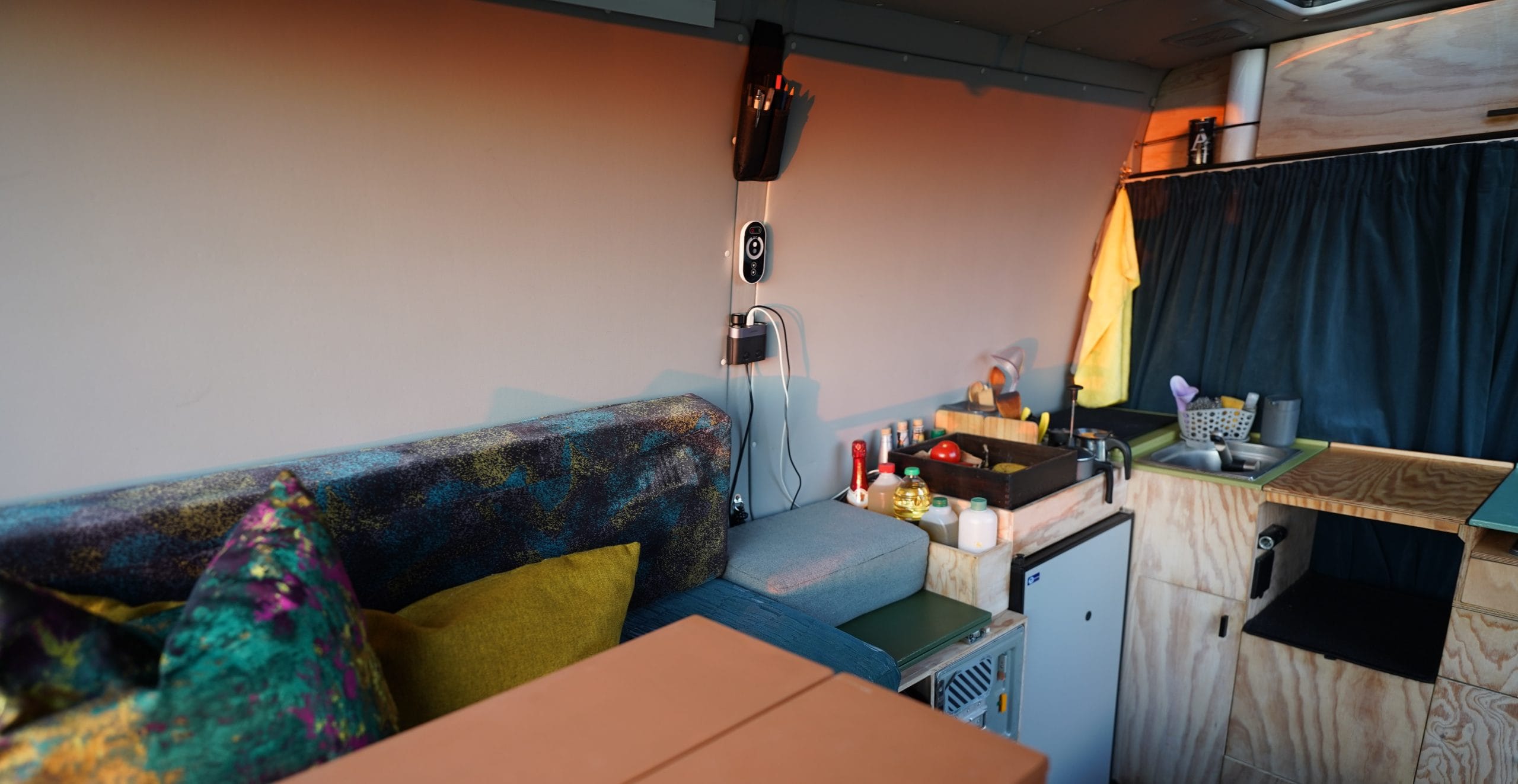
It took us about a year to complete the van. The process of planning, customizing, and sourcing the right parts was time-consuming. We faced frustrations and moments of doubt, but finishing the van was incredibly rewarding. The experience taught us a lot, not just about building a van but also about ourselves.
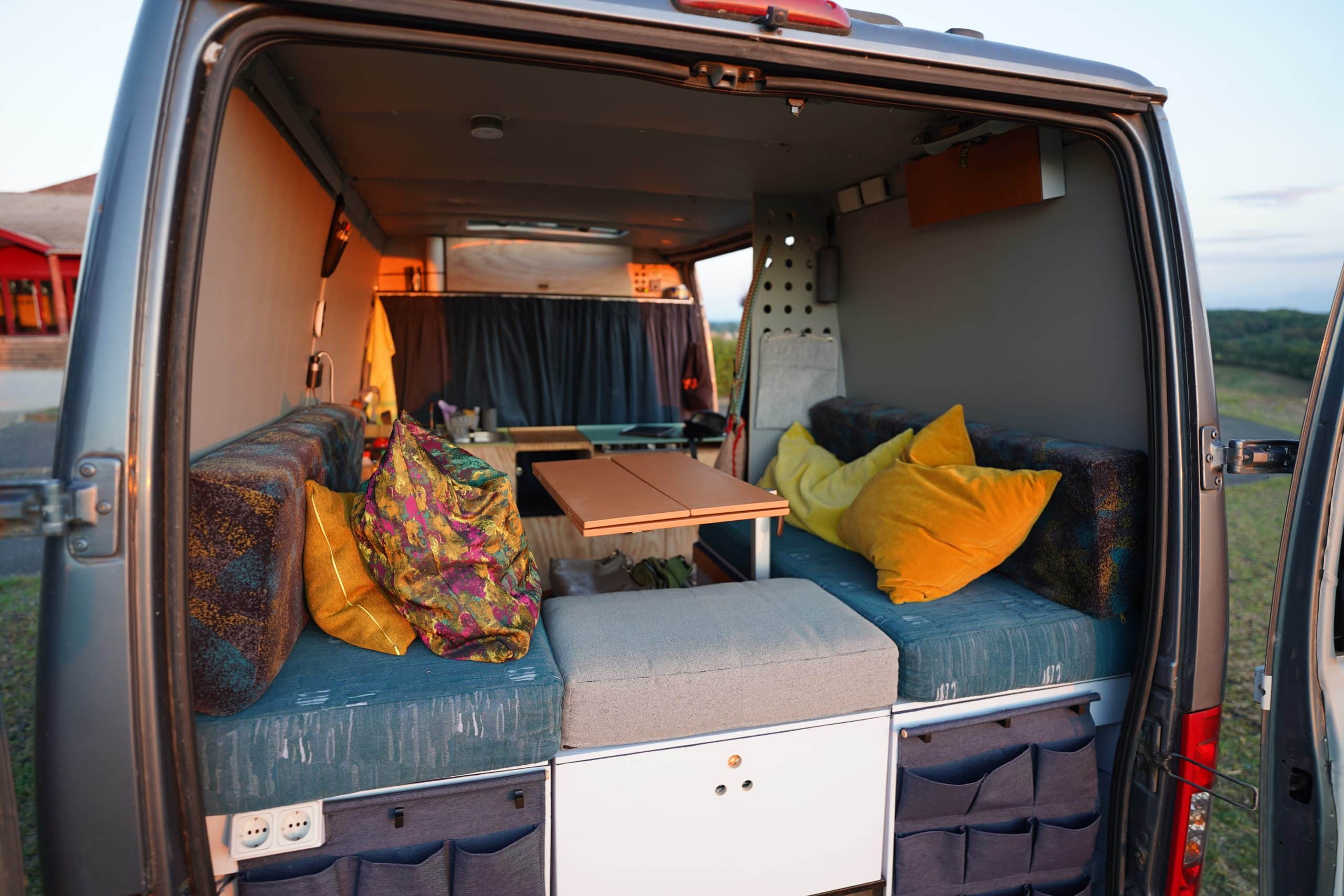
It was especially satisfying to restore and customize the van to our vision. Seeing it in great shape, just as we imagined, balanced out the tough phases and challenges.
Building wooden furniture with little experience turned out great, and it was our first time handling the water system, plumbing, solar power, electricity, heating, and internet setup.
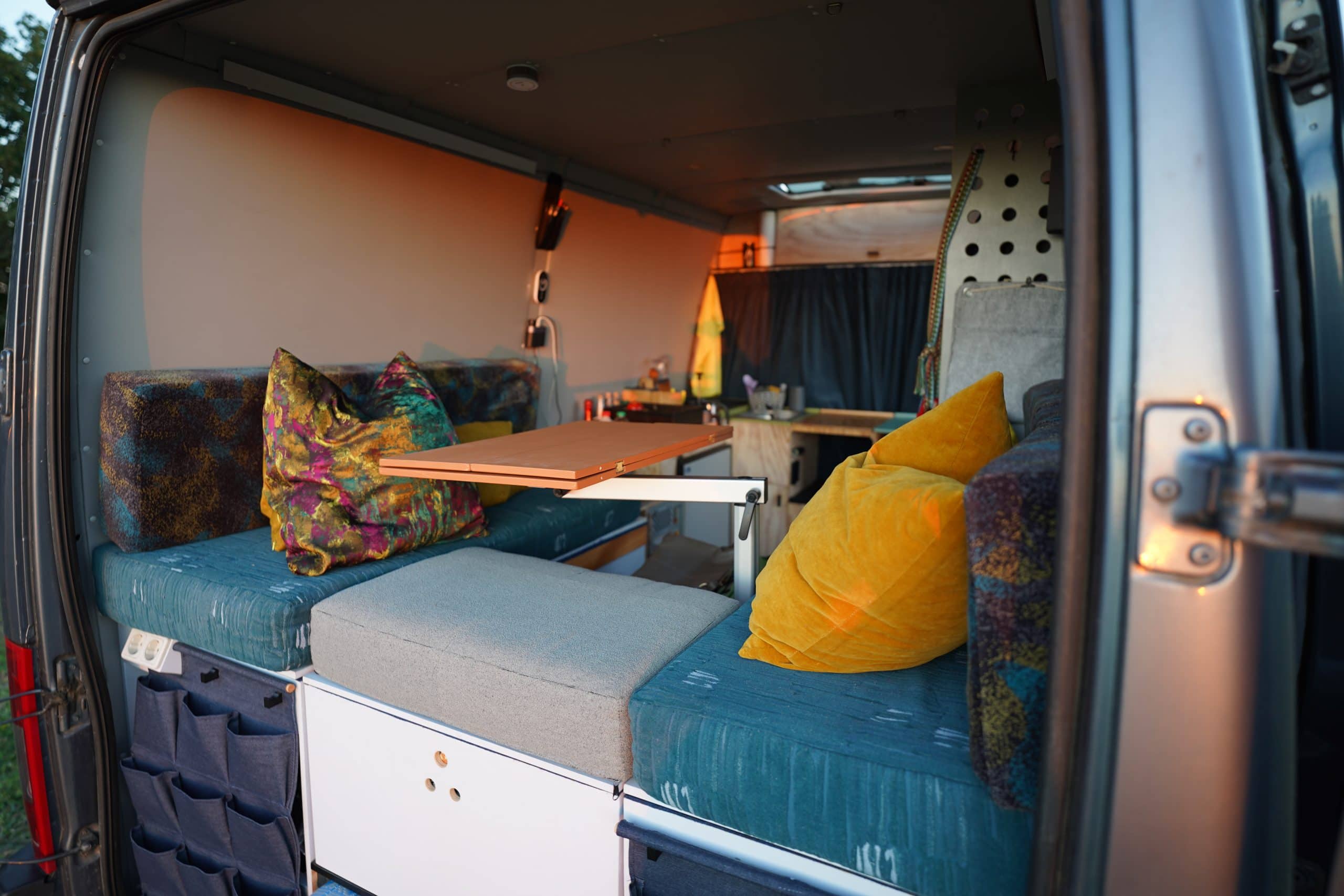
We think the result is fantastic. We love our cute little camper van, which has accompanied us on adventures for the past six years.</span class=”cah”>
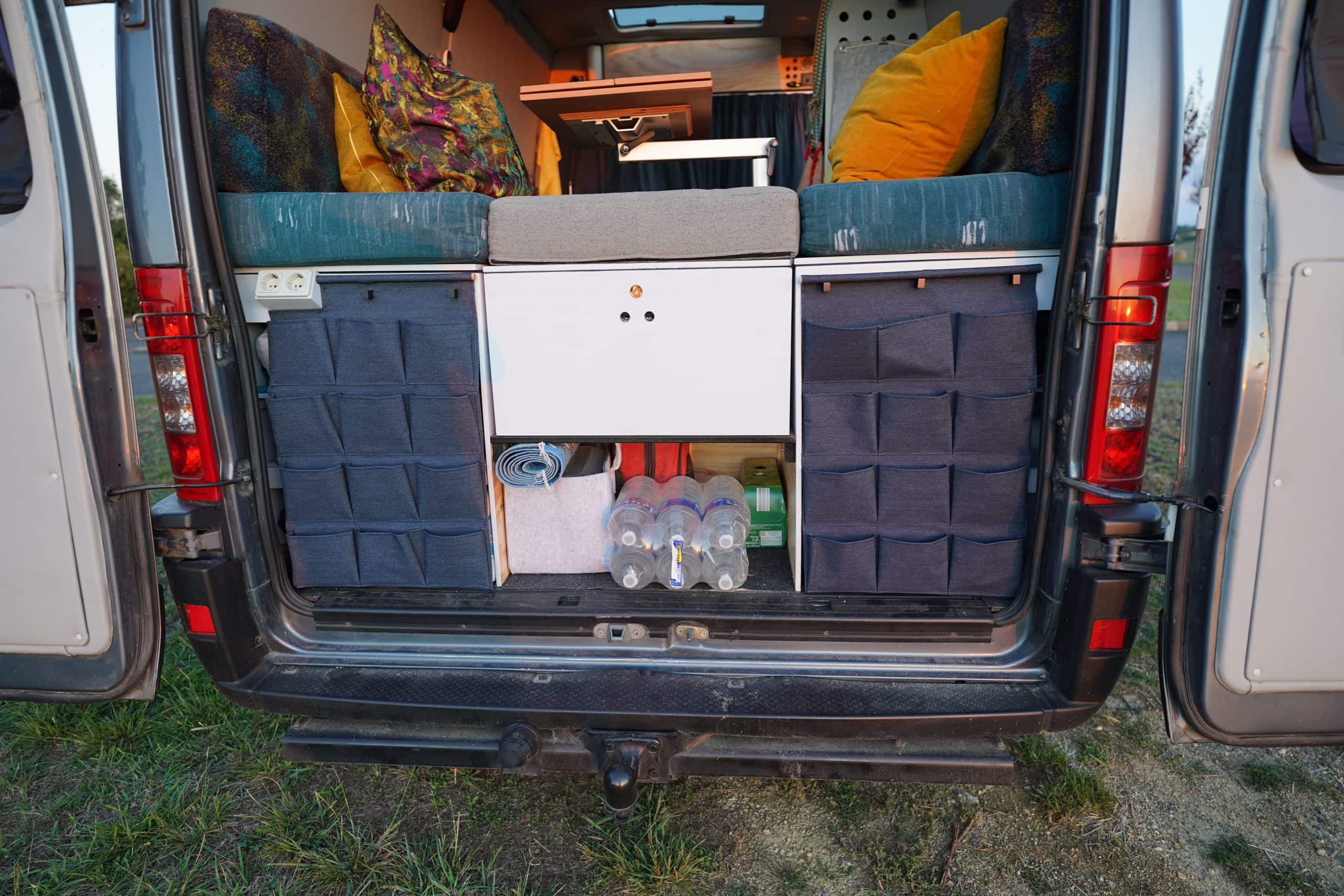
1 We extend the concept of self-care to how we house our physical bodies, including the physical space in which we live. This means creating a comfortable home that reflects our personal expression. And also learning the practical aspects of housing, such as maintenance, electricity, water, insulation, and heating. This not only improves our living environment, but also creates a sense of empowerment, survival capability, and self-sufficiency.
Images: cueljs
